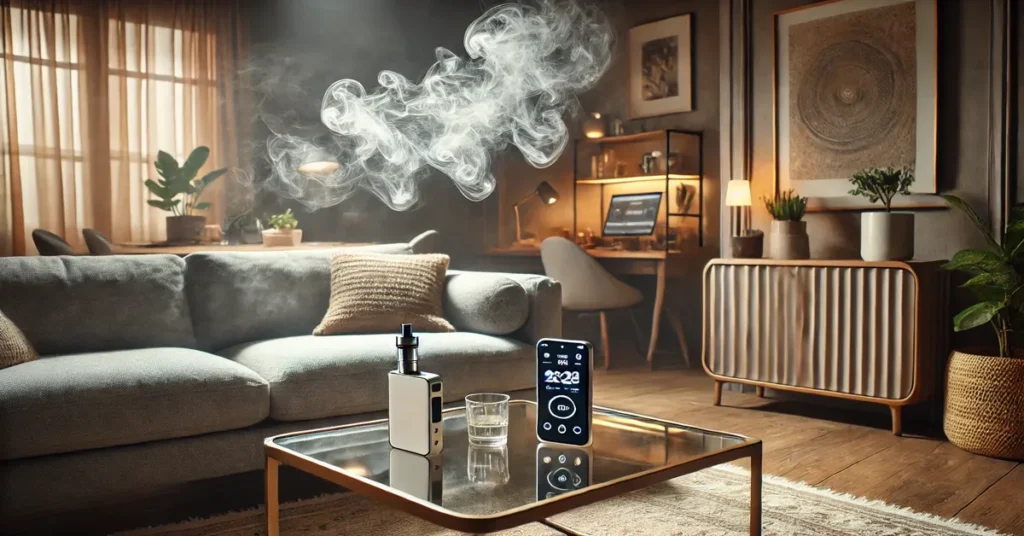Have you ever wondered if someone’s vaping indoors without you knowing? With the rise of e-cigarettes, it’s become trickier to spot the signs compared to traditional smoking. Vaping doesn’t leave a lingering smell like cigarettes, making it harder to detect. But don’t worry; there are subtle clues you can look for on how to notice if someone vapes at home.
This page will explain indoor vaping’s indicators, from strange smells to air quality changes. You’ll learn to spot vaping’s subtle traces to keep your house smoke-free. These recommendations will keep you educated and attentive, whether you’re a worried parent or interested. Let’s explore vaping detection and keep our homes healthy.
RELX’s Commitment to Prevent Underage Vaping
RELX prioritises keeping e-cigarettes out of underage hands. They carry out strategic measures to safeguard against youth access and involve the community in preventing unsanctioned sales.
Age Verification Measures on RELX’s Platform
RELX employs rigorous digital age verification on its platform. It’s integrated systems that require users to confirm their age before purchasing. At any stage, if someone cannot provide legitimate proof of age, a transaction halts. This approach reminds me of an incident where I was asked for multiple proofs of age to buy a simple item online—a small measure that goes a long way in protecting minors.
Educating Retailers to Prevent Underage Sales of RELX Products
Retailers play a crucial role in preventing underage access. RELX works closely with them to educate them about the importance of verifying ages thoroughly. They provide training sessions that cover the legal consequences of selling to minors and share techniques to spot fake IDs. Engaging with these programs helps retailers be vigilant, creating safer communities by reducing the risk that minors vape indoors unnoticed.
Signs of Indoor Vaping
Detecting indoor vaping can be tricky due to its subtle cues, but I have some pointers to help spot these hidden signs.
Unusual Odours
While vaping often produces less odour than traditional smoking, certain scents can still reveal its presence. Vapes can leave sweet, fruity, or candy-like smells lingering. I once caught a faint whiff of vanilla that led me to discover a hidden e-cigarette.
Visible Vapour Residue
Vaping isn’t as discreet as it might appear, as it can leave behind thin film layers on surfaces. Mirrors, windows, and even tabletops might develop a slight sticky residue. Keep an eye on surfaces that seem dirtier than usual, which could point toward indoor vaping.
Behavioural Clues
A change in someone’s behaviour can also be telling. If you notice frequent trips to the bathroom or going outside for brief moments, it could hint at vaping habits. I once observed a friend excuse themselves repeatedly during a movie night, only to find them vaping in the garden.
Physical Symptoms
Physical changes provide clues to vaping. Dry mouth, increased thirst, or throat irritation are common symptoms. Friends who’ve vaped indoors reported thirst more often, needing to have drinks on hand. These symptoms might signal someone’s vaping at home.
Detecting Vaping through Technology
Identifying indoor vaping without being intrusive can be tricky. Thankfully, technology offers reliable solutions to notice if someone vapes at home.
Vape Detectors
Vape detectors, specifically designed for e-cigarette emissions, can pinpoint vapour in the air. A friend recently shared how installing a detector in a shared flat helped decrease indoor vaping. These devices use advanced sensors to identify vapour and alert through alarms or connected apps. They’re usually compact and blend seamlessly into room decor, making them perfect for unobtrusive monitoring, especially in common areas like living rooms or hallways.
Air Quality Monitors
Air quality monitors track changes in indoor conditions, identifying vaping through altered chemical levels. When my family tried one, we were surprised at how it rapidly picked up shifts in air quality. These monitors measure particulate matter and volatile organic compounds, which often spike during vaping. Offering continuous insights via smartphone apps, they alert users to potential vaping activity and help maintain healthier indoor environments.
Understanding the Effects of Vaping Indoors
Vaping indoors can significantly alter the environment in subtle ways that are easy to overlook. Recognising these changes helps one better understand the impact.
Airborne Chemicals
Vaping releases chemicals like nicotine into the air, even if they aren’t immediately evident. Air quality monitors can pick up these changes in airborne components. Once, during a family gathering at my home, someone vaped, and a sharp spike in the monitor’s readings confirmed the presence of chemicals invisible to the naked eye. Such devices can be invaluable, showing the unseen elements introduced by vaping.
Residue on Surfaces
Vape residue can leave thin films on surfaces, including mirrors and tables. This residue often catches the sunlight, making it more visible. I’ve noticed this in my living room, where specks on the coffee table hinted at vaping activity. Regular cleaning might resolve it, but the persistence of residue suggests ongoing vaping.
Lingering Smell
Even though being subtler than traditional smoke, vaping emits distinct odours. These scents, such as fruity or candy-like smells, can drift unnoticed. I’ve often detected these unusual aromas around my home, making me question recent activities within the room. It’s a crafty sign, helping answer how to notice if someone vapes at home without direct evidence.
Conclusion
Detecting indoor vaping requires a keen eye and awareness. I once noticed a sweet, fruity smell lingering in the living room—an immediate clue that my teenage son was vaping. Flickering LED lights from his e-cigarette caught my attention, too. Remember to look for persistent smells and behavioural patterns. Equip yourself with air quality monitors or vape detectors for peace of mind. Keep conversations open with family members to address vaping signs promptly.







